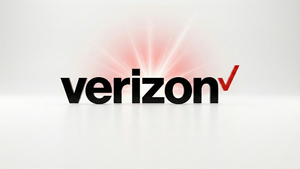
Frankfurt, Germany – September 29, 2025 – The Society for Worldwide Interbank Financial Telecommunication (SWIFT) has officially launched a groundbreaking initiative to develop a blockchain-based ledger for 24/7 cross-border payments. This pivotal move, announced at the Sibos conference, sees SWIFT collaborating with over 30 leading global financial institutions and blockchain software firm Consensys to construct a shared digital ledger designed to revolutionize international transactions. The immediate implications are profound: a significant leap towards real-time, always-on global payments, promising enhanced efficiency, reduced costs, and greater transparency across the financial ecosystem.
This ambitious project signals SWIFT's strategic evolution, extending its traditional role as a messaging network into a facilitator of digital value transfer. By leveraging distributed ledger technology (DLT), SWIFT aims to bridge the gap between conventional fiat systems and the burgeoning world of digital assets, including stablecoins and central bank digital currencies (CBDCs). The initiative is poised to reshape the landscape of international finance, addressing long-standing inefficiencies and setting the stage for a more integrated and agile global payment infrastructure.
A Deep Dive into SWIFT's Digital Transformation
The core of SWIFT's new initiative is a blockchain-based shared ledger engineered to enable instantaneous, 24/7 cross-border payments. This ledger will function as a secure, real-time record of transactions between participating financial institutions, utilizing smart contracts to automate the recording, sequencing, validation, and enforcement of transaction rules. Blockchain software firm Consensys, a key developer within the Ethereum ecosystem, has been tasked with building the conceptual prototype for this ledger, marking a significant step in bringing this vision to fruition.
The timeline leading up to this announcement highlights SWIFT's increasing engagement with DLT over the past two years. In November 2024, SWIFT successfully integrated tokenized fund processes with existing fiat payment systems through its global financial messaging network, a collaboration with UBS Asset Management and Chainlink as part of the Monetary Authority of Singapore's Project Guardian. This demonstrated the seamless settlement of tokenized fund subscriptions and redemptions. Later in 2024, SWIFT revealed plans for live digital asset trials with banks in North America, Europe, and Asia, focusing on unified access to diverse digital asset classes and currencies. More recently, SWIFT has been reportedly experimenting with migrating its system on-chain using Consensys' Ethereum Layer 2 Linea, with major banks like BNP Paribas (EPA: BNP) and BNY Mellon (NYSE: BK) participating in messaging trials to assess its suitability for streamlining messaging and settlement while adhering to regulatory standards.
Key players in this monumental undertaking include more than 30 global financial institutions. This impressive roster features banking giants such as JPMorgan (NYSE: JPM), HSBC (LSE: HSBA), Deutsche Bank (ETR: DBK), Banco Santander (BME: SAN), Bank of America (NYSE: BAC), BNP Paribas (EPA: BNP), MUFG (TYO: 8306), OCBC (SGX: O39), Citi (NYSE: C), and Standard Chartered (LSE: STAN). Their active collaboration is crucial, providing invaluable feedback on the ledger's design and ensuring its future implementation meets the complex and varied demands of the global banking community. Initial market reactions have been largely positive, with industry analysts hailing the move as a strategic imperative for SWIFT to maintain its relevance in an increasingly digitized financial world. The announcement is expected to intensify discussions around the future of cross-border payments and the role of DLT in traditional finance.
Potential Winners and Losers in the Digital Payment Race
The advent of SWIFT's blockchain-based ledger initiative is set to create distinct winners and losers within the financial industry, fundamentally altering competitive dynamics and operational models.
Potential Winners:
- SWIFT: By embracing DLT, SWIFT reinforces its central role in global finance. This initiative positions it as a key facilitator of digital value transfer, ensuring its continued relevance in an era of tokenized assets and CBDCs. Its ability to adapt and integrate new technologies will likely solidify its market position against emerging blockchain-native payment solutions.
- Consensys: As the chosen blockchain software firm to build the conceptual prototype, Consensys gains significant credibility and a substantial partnership. This collaboration will likely lead to increased adoption of its underlying technologies, particularly Ethereum Layer 2 solutions like Linea, and enhance its standing as a leading provider of enterprise blockchain solutions.
- Participating Financial Institutions: Banks like JPMorgan (NYSE: JPM), HSBC (LSE: HSBA), Deutsche Bank (ETR: DBK), and others involved in the consortium stand to benefit immensely. They gain early access to cutting-edge payment infrastructure, potentially reducing their operational costs, accelerating transaction speeds, and offering improved services to their corporate and retail clients. This early adoption could provide a significant competitive advantage in attracting and retaining international business.
- Corporations and SMEs: Businesses engaged in international trade will benefit from faster, cheaper, and more transparent cross-border payments. This could significantly improve cash flow management, reduce foreign exchange risks, and streamline supply chain finance, ultimately fostering global economic activity.
Potential Losers (or those facing significant adaptation challenges):
- Traditional Correspondent Banks (without DLT adoption): Banks heavily reliant on traditional, slow, and expensive correspondent banking networks, particularly those slow to adopt DLT solutions, may see their revenue streams from cross-border payments diminish. The increased efficiency and lower costs offered by SWIFT's new ledger could erode their competitive edge.
- Smaller, Niche Cross-Border Payment Providers: While some agile fintechs might integrate with the new SWIFT system, those offering less efficient or less secure proprietary solutions could struggle to compete with the scale, trust, and interoperability offered by a SWIFT-backed blockchain ledger.
- Legacy Payment Infrastructure Providers: Companies providing outdated or non-DLT compatible payment infrastructure may face declining demand as financial institutions migrate to more modern, blockchain-enabled systems.
The impact on these entities will largely depend on their agility and willingness to adapt to this evolving financial landscape. Those that embrace and integrate with SWIFT's new paradigm are likely to thrive, while those clinging to legacy systems may face significant challenges.
The Wider Significance: Reshaping the Global Financial Landscape
SWIFT's blockchain-based ledger initiative is not merely an upgrade; it's a strategic pivot that aligns with and accelerates several broader industry trends, poised to reshape the global financial landscape.
Firstly, this event fits squarely into the accelerating trend of digitalization and tokenization of assets. As central banks explore CBDCs and financial institutions tokenize various forms of value, a robust, interoperable infrastructure for their movement becomes critical. SWIFT's ledger, designed to facilitate the trusted transfer of regulated tokenized value, positions it as a crucial enabler for this digital future. It acknowledges that the future of finance is increasingly digital and seeks to provide the necessary rails for it.
Secondly, the initiative will have significant ripple effects on competitors and partners. For existing blockchain-based payment providers, such as Ripple (XRP), this move by SWIFT could be seen as both a validation of DLT's potential and a formidable challenge. While some may argue it legitimizes the space, SWIFT's entrenched network and regulatory relationships provide a competitive advantage that smaller players may struggle to match. Conversely, for SWIFT's traditional partners, particularly those in the correspondent banking network, this represents an opportunity to modernize and offer enhanced services, but also a call to action to adapt quickly.
Thirdly, regulatory and policy implications are substantial. By focusing on regulated tokenized value and ensuring compliance with existing standards, SWIFT is navigating the complex regulatory environment surrounding digital assets. This approach could set a precedent for how DLT is integrated into mainstream finance, potentially influencing future regulatory frameworks. Governments and central banks will likely observe this initiative closely, as it could inform their strategies for cross-border CBDC implementation and digital asset oversight. The emphasis on security, compliance, and interoperability is paramount for gaining regulatory approval and widespread adoption.
Historically, this event can be compared to the very genesis of SWIFT itself in the 1970s, which revolutionized international banking by replacing telex messages with a standardized, secure communication network. Just as SWIFT brought efficiency and standardization to interbank messaging, this blockchain ledger aims to do the same for the actual settlement of cross-border payments. Another parallel can be drawn with the emergence of electronic trading platforms that transformed securities markets, moving from manual processes to instantaneous digital execution. SWIFT's initiative represents a similar leap for cross-border value transfer, marking a fundamental shift in how money moves globally.
What Comes Next: Navigating the Future of Payments
The launch of SWIFT's blockchain-based ledger initiative sets in motion a series of short-term and long-term possibilities, demanding strategic adaptations and presenting both significant opportunities and challenges.
In the short-term, the immediate focus will be on the successful development and piloting of the ledger. The collaboration with Consensys and the active involvement of over 30 financial institutions will center on refining the prototype, conducting rigorous testing, and ensuring seamless integration with existing banking systems. We can expect to see initial trials focusing on specific payment corridors and use cases to demonstrate the ledger's capabilities and iron out any technical or operational complexities. Financial institutions not yet involved may begin exploring their own DLT strategies or seeking ways to participate in future phases of SWIFT's initiative to avoid being left behind.
Looking at the long-term possibilities, this initiative could fundamentally redefine the global payment infrastructure. It paves the way for a truly instantaneous and cost-effective cross-border payment system that operates 24/7, effectively eliminating traditional banking hours and settlement delays. This could accelerate global trade, foster financial inclusion by reducing transaction costs for remittances, and enable entirely new business models built on real-time value transfer. The interoperability with CBDCs and other tokenized assets suggests a future where diverse digital currencies can move seamlessly across borders within a regulated and trusted framework.
Potential strategic pivots or adaptations will be required across the industry. Banks will need to invest in upgrading their internal systems and training their staff to leverage the new ledger effectively. Fintech companies may pivot their offerings to integrate with SWIFT's DLT solution or develop complementary services. Regulators will need to continue evolving their frameworks to accommodate the nuances of blockchain-based cross-border payments, ensuring both innovation and stability.
Market opportunities will emerge in areas like DLT integration services, smart contract development, and enhanced data analytics for real-time transaction monitoring. Conversely, challenges include ensuring the scalability of the blockchain solution to handle global transaction volumes, maintaining robust cybersecurity against sophisticated threats, and navigating the complexities of international regulatory harmonization. The success of the initiative will depend on overcoming these hurdles and fostering broad industry adoption.
A Comprehensive Wrap-Up: The Dawn of Instant Global Payments
SWIFT's bold move into blockchain-based ledger technology for 24/7 cross-border payments represents a watershed moment in the evolution of global finance. The key takeaway is clear: the era of slow, costly, and opaque international transactions is rapidly drawing to a close. By collaborating with a consortium of over 30 financial powerhouses and leveraging the expertise of Consensys, SWIFT is not just adapting to the digital age; it is actively shaping its infrastructure. This initiative underscores SWIFT's commitment to maintaining its central role in the financial ecosystem, transitioning from a mere messaging network to a critical facilitator of digital value transfer.
Moving forward, the market is poised for a significant transformation. We can anticipate increased competition in the cross-border payments space, with a strong emphasis on efficiency, speed, and cost-effectiveness. The integration of DLT will likely drive down operational expenses for financial institutions and reduce transaction fees for businesses and individuals, stimulating global economic activity. The push for interoperability between traditional fiat currencies, stablecoins, and CBDCs through a trusted ledger will create a more unified and accessible global financial system.
The lasting impact of this initiative could be as profound as the original establishment of SWIFT itself. It promises to democratize cross-border payments, making them more accessible and equitable, while also enhancing transparency and compliance. This fundamental shift will empower businesses to operate more efficiently on a global scale and provide consumers with faster, cheaper ways to send and receive money internationally.
Investors should closely watch several key indicators in the coming months. These include progress reports on the ledger's development and pilot programs, announcements of additional financial institutions joining the consortium, and any regulatory guidance or frameworks that emerge in response to this innovation. Furthermore, observing how existing fintech payment solutions adapt to or integrate with SWIFT's new offering will be crucial. The success of this initiative will not only redefine SWIFT's future but also set a new benchmark for how money moves across borders in the 21st century.
This content is intended for informational purposes only and is not financial advice





